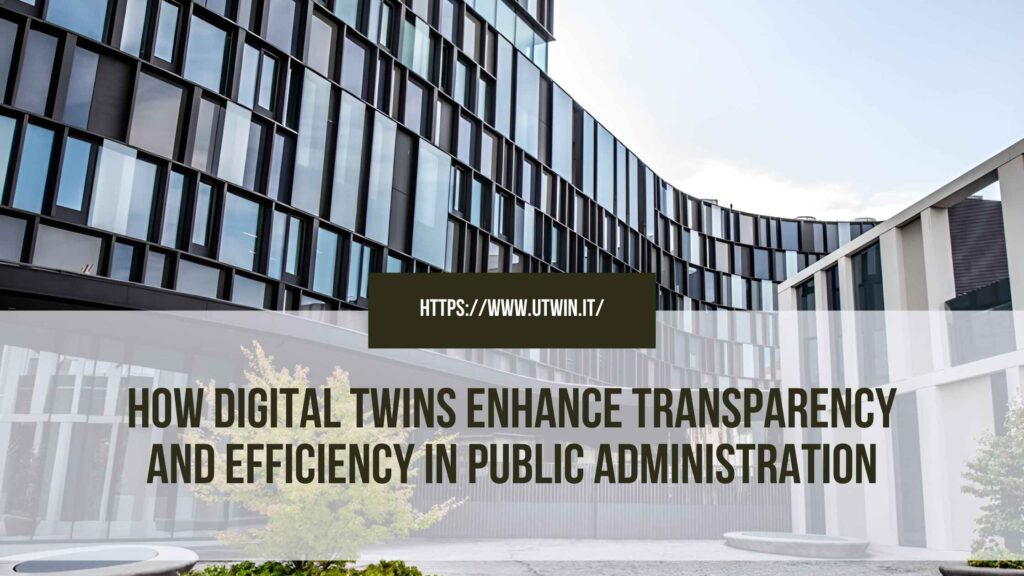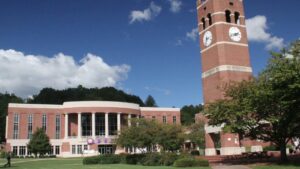As cities grow and the demand for smarter governance increases, public administrations worldwide are embracing innovative technologies to meet these challenges. One of the most transformative tools emerging today is the digital twin. Originally used in manufacturing and engineering, digital twin technology is now revolutionizing the way governments plan, monitor, and manage public assets and services. At its core, a digital twin is a real-time virtual replica of physical assets, systems, or processes that allows for data-driven decision-making.
In the context of public administration, digital twins offer significant benefits in enhancing transparency, efficiency, and citizen trust—three pillars of effective governance in the 21st century.
What Are Digital Twins in Public Administration?
A digital twin in public administration represents an accurate, constantly updated digital model of public infrastructure, such as roads, buildings, utilities, and transportation systems. These models are powered by real-time data collected from sensors, Internet of Things (IoT) devices, satellite imagery, and various databases. They provide a dynamic, interactive environment where government agencies can visualize current operations, simulate potential changes, and forecast outcomes before implementing policies.
Enhancing Transparency
- Open Access to Public Information
Digital twins make complex infrastructure and planning data accessible and understandable to the public. By visualizing real-time data through interactive dashboards or digital maps, citizens can see ongoing projects, budget allocations, and timelines. This level of openness reduces suspicion and speculation, fostering public trust in the decision-making process.
For example, a city planning to renovate a public park can use a digital twin to show 3D renderings of the proposed design, update residents on construction progress, and gather feedback. This two-way communication loop enhances participatory governance and allows residents to feel involved and informed.
- Auditability and Traceability
With every action and update logged in real-time, digital twins offer a transparent trail of administrative decisions and resource allocation. This creates a tamper-proof digital audit trail that makes it easier for oversight bodies, journalists, or citizens to monitor how public funds are being spent and how effectively government initiatives are executed.
- Performance Metrics in Real-Time
Digital twins can measure performance indicators such as energy usage, traffic congestion, or emergency response times. By publishing these metrics openly, governments can demonstrate accountability and show whether services are meeting expectations or falling short.
Improving Efficiency
- Better Decision-Making Through Simulation
Before committing to costly infrastructure projects, public administrators can use digital twins to simulate various scenarios. For instance, before expanding a public transportation route, officials can simulate rider traffic, environmental impact, and cost over time. This ability to test before investing significantly reduces risk and waste, leading to more informed, efficient decisions.
- Proactive Maintenance and Resource Management
With data flowing continuously from sensors embedded in public infrastructure, digital twins enable predictive maintenance. Instead of waiting for a bridge or water pipe to break down, city managers can monitor its condition in real time and schedule repairs before a failure occurs, reducing downtime and saving taxpayer money.
Similarly, digital twins help optimize the use of limited public resources. Garbage collection routes can be dynamically adjusted based on real-time fill levels of bins. Streetlights can be dimmed during low-traffic hours to save energy. These optimizations reduce costs while improving the quality of services.
- Crisis Management and Emergency Response
In times of natural disasters or public health crises, digital twins provide a virtual command center. Emergency services can monitor the situation in real time, test various response strategies virtually, and deploy the most effective solution with precision. During the COVID-19 pandemic, some governments used digital twins to simulate virus spread patterns and plan resource deployment accordingly.
Case Studies: Digital Twins in Action
Singapore
Singapore’s Virtual Singapore initiative is a comprehensive 3D digital twin of the entire city. It integrates real-time data for urban planning, disaster management, and energy use. Government agencies can visualize how new buildings will affect wind patterns or sunlight before construction begins, ensuring better urban design.
Helsinki, Finland
Helsinki has developed a digital twin to support sustainability and citizen engagement. Residents can explore proposed urban development plans in virtual reality, giving them a voice in city planning and promoting transparency in long-term strategy.
United States
Several U.S. cities are experimenting with digital twins for transportation and utility management. For example, Los Angeles has piloted digital twin models to simulate traffic patterns and reduce congestion, directly improving commuter experiences.
Challenges and Considerations
While digital twins offer many advantages, public administrations must address several challenges:
- Data Privacy: As these systems collect vast amounts of data, ensuring the privacy and security of citizens’ information is paramount.
- Interoperability: Integrating data from various legacy systems and departments can be technically complex.
- Initial Cost: Building a robust digital twin requires investment in infrastructure, sensors, and skilled personnel.
Despite these hurdles, the long-term return on investment in terms of efficiency gains, reduced operational costs, and improved citizen satisfaction makes digital twin technology a compelling tool for modern governance.
Conclusion
Digital twins are no longer just a futuristic concept; they are actively reshaping how cities and governments operate. By providing a real-time, interactive, and data-driven view of public systems, digital twins significantly enhance transparency, efficiency, and public engagement in administration. As more governments adopt this technology, we can expect smarter, more accountable, and more resilient cities that better serve their citizens.
- How Digital Twins Improve Transparency & Efficiency in Public Administration
- Discover how digital twins are transforming public administration by enhancing transparency, improving efficiency, and enabling smarter, data-driven governance decisions.
- Discover how digital twins are transforming public administration by enhancing transparency, improving efficiency, and enabling smarter, data-driven governance decisions.
Related posts:
 Why KBH Games Is Perfect for Family-Friendly Online Entertainment
Why KBH Games Is Perfect for Family-Friendly Online Entertainment
 Build a Seamless School Portal with These Powerful Templates
Build a Seamless School Portal with These Powerful Templates
 Samsung Galaxy S24 Ultra Price in Pakistan: A Closer Look at the Mid-Range Marvel
Samsung Galaxy S24 Ultra Price in Pakistan: A Closer Look at the Mid-Range Marvel
 The Ultimate Web Development Checklist for Building High-Performance Digital Experiences
The Ultimate Web Development Checklist for Building High-Performance Digital Experiences
 How Ecommerce ERP Transforms Inventory and Order Management – Rholab
How Ecommerce ERP Transforms Inventory and Order Management – Rholab
 Benefits of AI-powered CCTV Cameras for Business Surveillance
Benefits of AI-powered CCTV Cameras for Business Surveillance
 Top App Development Agency UK – Transforming Ideas into Apps
Top App Development Agency UK – Transforming Ideas into Apps
 Transforming Oil and Gas Operations in Qatar with Microsoft Dynamics 365 Supply Chain Management
Transforming Oil and Gas Operations in Qatar with Microsoft Dynamics 365 Supply Chain Management






